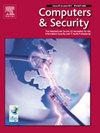TEE技术的实验评估:基于SGX、SEV和TDX的透明方法的基准测试
IF 4.8
2区 计算机科学
Q1 COMPUTER SCIENCE, INFORMATION SYSTEMS
引用次数: 0
摘要
保护使用中的数据是一个关键的优先事项,可信执行环境(TEE)技术无可争议地成为一种(可能是最有前途的)解决方案。多年来已经发布了多个服务器端TEE产品,在几个方面表现出了实质性的差异。第一个出现的是英特尔SGX,它的特点是基于进程的TEE保护,这是一种高效但难以使用的方法。一些SGX的限制(部分)被运行时克服,特别是:Gramine, Scone和Occlum。后来AMD SEV带来了一个重大的范式转变,基于vm的TEE保护,使传统应用程序的“提升和转移”部署成为可能。这个新范例最近才由英特尔在TDX中实现。虽然上述TEE解决方案的威胁模型已经被广泛讨论,但文献中仍然缺乏彻底的性能比较。本文对TDX、SEV、Gramine-SGX和Occlum-SGX进行了比较评价。我们在不同的操作场景下研究计算开销和资源使用情况,并使用不同的遗留应用程序套件。通过这样做,我们在现实条件下提供可靠的性能评估。我们明确强调,在撰写本文时,TDX是最近向公众发布的。因此,TDX的评估是本研究的一个独特之处。本文章由计算机程序翻译,如有差异,请以英文原文为准。
An experimental evaluation of TEE technology: Benchmarking transparent approaches based on SGX, SEV, and TDX
Protection of data-in-use is a key priority, for which Trusted Execution Environment (TEE) technology has unarguably emerged as a — possibly the most — promising solution. Multiple server-side TEE offerings have been released over the years, exhibiting substantial differences with respect to several aspects. The first comer was Intel SGX, which featured Process-based TEE protection, an efficient yet difficult to use approach. Some SGX limitations were (partially) overcome by runtimes, notably: Gramine, Scone, and Occlum. A major paradigm shift was later brought by AMD SEV, with VM-based TEE protection, which enabled ”lift-and-shift” deployment of legacy applications. This new paradigm has been implemented by Intel only recently, in TDX. While the threat model of the aforementioned TEE solutions has been widely discussed, a thorough performance comparison is still lacking in the literature. This paper provides a comparative evaluation of TDX, SEV, Gramine-SGX, and Occlum-SGX. We study computational overhead and resource usage, under different operational scenarios and using a diverse suite of legacy applications. By doing so, we provide a reliable performance assessment under realistic conditions. We explicitly emphasize that — at the time of writing — TDX was recently released to the public. Thus, the evaluation of TDX is a unique feature of this study.
求助全文
通过发布文献求助,成功后即可免费获取论文全文。
去求助
来源期刊

Computers & Security
工程技术-计算机:信息系统
CiteScore
12.40
自引率
7.10%
发文量
365
审稿时长
10.7 months
期刊介绍:
Computers & Security is the most respected technical journal in the IT security field. With its high-profile editorial board and informative regular features and columns, the journal is essential reading for IT security professionals around the world.
Computers & Security provides you with a unique blend of leading edge research and sound practical management advice. It is aimed at the professional involved with computer security, audit, control and data integrity in all sectors - industry, commerce and academia. Recognized worldwide as THE primary source of reference for applied research and technical expertise it is your first step to fully secure systems.
 求助内容:
求助内容: 应助结果提醒方式:
应助结果提醒方式:


